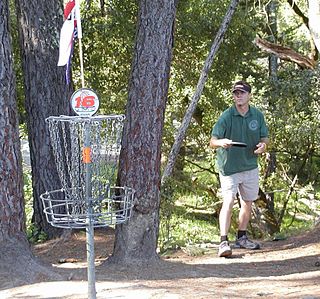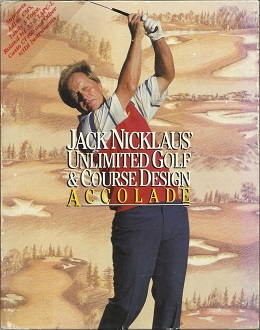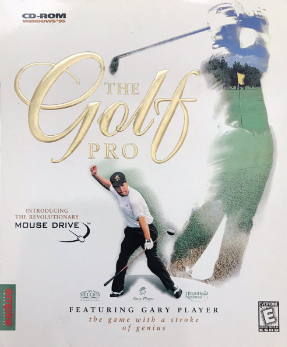
Disc golf, formerly known as frisbee golf, is a flying disc sport in which players throw a disc at a target; it is played using rules similar to golf. Most disc golf discs are made out of polypropylene plastic, otherwise known as polypropene, which is a thermoplastic polymer resin used in a wide variety of applications. Discs are also made using a variety of other plastic types that are heated and molded into individual discs. The sport is usually played on a course with 9 or 18 holes (baskets). Players complete a hole by throwing a disc from a tee pad or area toward a target, known as a basket, throwing again from where the previous throw landed, until the basket is reached. The baskets are formed by wire with hanging chains above the basket, designed to catch the incoming discs, which then fall into the basket. Usually, the number of throws a player uses to reach each basket is tallied, and players seek to complete each hole in the lowest number of total throws. Par is the number of strokes an expert player is expected to make for a given hole or a group of holes.

PGA Tour Golf is a golf video game and the first in the PGA Tour game series. It was developed by Sterling Silver Software and released in 1990, for MS-DOS. It was initially published by Electronic Arts, which subsequently released versions of the game for Sega Genesis and Amiga in 1991, followed by a version for the SNES in 1992. By 1994, Tengen had published versions for Sega's Master System and Game Gear consoles. PGA Tour Golf received generally positive reviews for its realism, sound, and camera. Several critics considered the computer versions to be the best golf game available at the time of its release. It was followed by PGA Tour Golf II.

Links 2003 is a golf video game developed by Microsoft and published by Microsoft Game Studios. It is part of the Links series and was released for Microsoft Windows in 2002. It follows Links 2001 and was followed by Links 2004. The game includes six courses, a course designer, and four professional golfers: David Toms, Jesper Parnevik, Sergio García, and Annika Sörenstam. Links 2003 introduces a golf swing method that works in real time as the player makes the shot.

Actua Golf is a sports video game developed and published by Gremlin Interactive for PlayStation and Sega Saturn.

Actua Golf 2 is a sports video game developed and published by Gremlin Interactive for PlayStation and Microsoft Windows. Development of the game was underway as of August 1997, and it was released in September 1997 in Europe, and in June 1998 in North America. A Sega Saturn version was planned, but eventually cancelled.

Links 2001 is a golf video game developed and published by Microsoft. It is part of the Links series and follows Links LS 2000. It is the first game in the series to include a golf course designer, allowing the player to create custom courses. It also features Arnold Palmer, Sergio García, and Annika Sörenstam as playable golfers.

Men in Black 2: The Series is an action video game developed by David A. Palmer Productions and published by Crave Entertainment for the Game Boy Color. It is based on the animated television series, Men in Black: The Series, and is a sequel to the 1999 video game of the same name. Crave Entertainment announced the game in March 2000, and released it in the United States in July 2000.

Swamp Buggy Racing is a racing video game developed by American studio Daylight Productions and published by WizardWorks for Microsoft Windows. The game was released in the United States in January 2000, and received negative reviews.

Jack Nicklaus 5 is a golf video game developed by American studio Eclipse Entertainment and published by Accolade for Windows 95. It is part of a series of golfing games named after golfer Jack Nicklaus. It was released in November 1997, shortly after its predecessor, Jack Nicklaus 4 (1997). Jack Nicklaus 5 received positive reviews for its graphics, sound, and a golf course designer feature, but the game sold poorly. It was followed by Jack Nicklaus 6: Golden Bear Challenge in 1999.

Jack Nicklaus 6: Golden Bear Challenge is a golf video game developed by Hypnos Entertainment and published by Activision for Microsoft Windows. It is part of a series of golfing games named after golfer Jack Nicklaus, and is the first in the series to feature him as a playable golfer. Producer and designer Mike Franco, who produced previous games in the series, began working on the game in November 1997, when Jack Nicklaus 5 was released.

Jack Nicklaus' Unlimited Golf & Course Design is a 1990 golf video game developed by Sculptured Software and published by Accolade for the Amiga and MS-DOS. A Super NES version with the same golf courses, titled Jack Nicklaus Golf, was released in May 1992. It is the second in a series of golf games named after golfer Jack Nicklaus, following Jack Nicklaus' Greatest 18 Holes of Major Championship Golf (1988).

Microsoft Golf 2001 Edition is a 2000 golf video game developed and published by Microsoft for Microsoft Windows. It is the final game in the Microsoft Golf series, and the successor to Microsoft Golf 1999 Edition. It uses the same game engine as Links LS 2000 (1999), part of Microsoft's Links series of golf games.

Links LS 2000 is a golf video game developed by Access Software and published by Microsoft. It is part of the Links series and was released in 1999 for Microsoft Windows, and in 2000 for Macintosh. It was followed by Links 2001.

Microsoft Golf 1998 Edition is a 1998 golf video game developed by American studio Friendly Software and published by Microsoft for Microsoft Windows. It is the fourth game in the Microsoft Golf series, following Microsoft Golf 3.0. The game uses a revamped design that is substantially different from its predecessors.

Microsoft Golf 1999 Edition is a golf video game developed by American studio Friendly Software and published by Microsoft for Microsoft Windows. It was released in the United States in late 1998. It is the fifth game in the Microsoft Golf series, following Microsoft Golf 1998 Edition, which was also developed by Friendly Software.

Links Extreme is a 1999 golf video game developed by Access Software and published by Microsoft for Microsoft Windows. It is the first game in the Links series to be published by Microsoft, which purchased Access Software a month prior to the game's release.

PGA Championship Golf 1999 Edition is a 1999 golf video game developed by Headgate Studios and published by Sierra Sports for Microsoft Windows. The game includes eight golf courses and a golf swing method known as TrueSwing, which uses the movement of the computer mouse to simulate a golf swing in real-time as the player makes the shot. Also included is the ReadyPlay feature, allowing golfers in a multiplayer group to play at their own pace without waiting for others to finish their turn. The game was praised for its variety, including its TrueSwing and ReadyPlay features, although its golf commentary was criticized. The game was followed by a sequel, PGA Championship Golf 2000.

The Golf Pro is a 1998 golf video game developed and published by Empire Interactive for Microsoft Windows. The game features professional golfer Gary Player, as well as two golf courses and a mouse-controlled golf swing method known as Mouse Drive. The game was generally praised for its graphics, but criticized for its limited camera angles. By early 1999, The Golf Pro 2 had been released in the United Kingdom.

Front Page Sports: Golf is a golf simulation video game developed by Headgate Studios and published by Sierra On-Line for Microsoft Windows. The game was released in 1997, after nearly three years of development. It was particularly praised for its TrueSwing method, in which the player uses the computer mouse to simulate the golf swing.

Microsoft Baseball 3D 1998 Edition, also known as simply Microsoft Baseball 3D, is a sports video game developed by Microsoft and WizBang! Software Productions. It was released for Microsoft Windows in 1998. It received praise for its graphics, but criticism for numerous glitches and its varying difficulty. It was followed by Microsoft Baseball 2000 and Microsoft Baseball 2001.




















